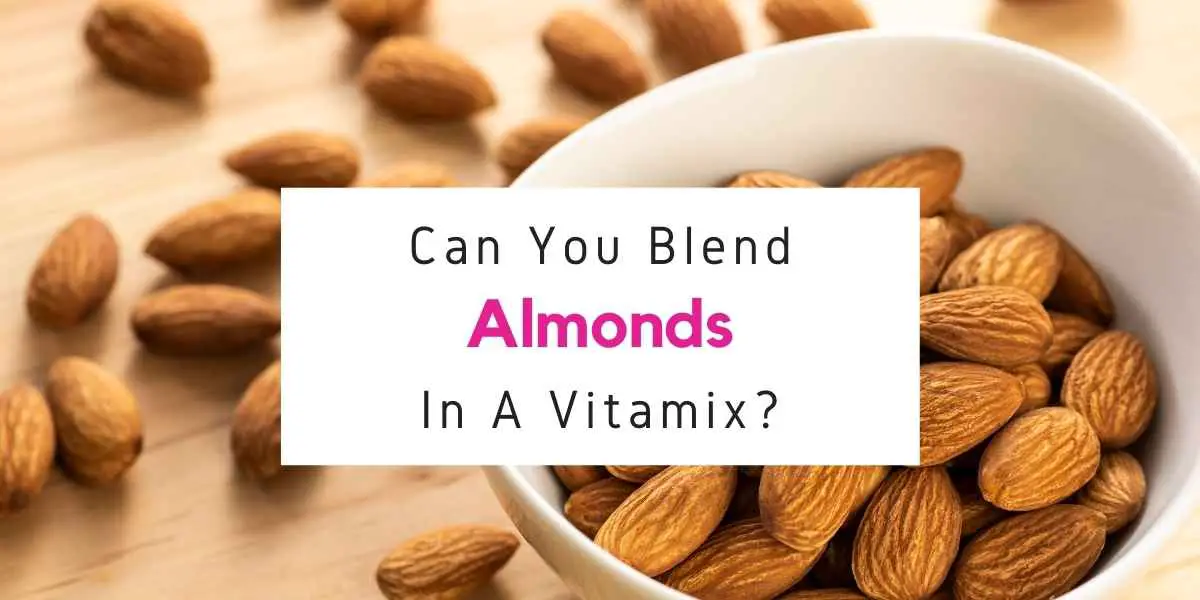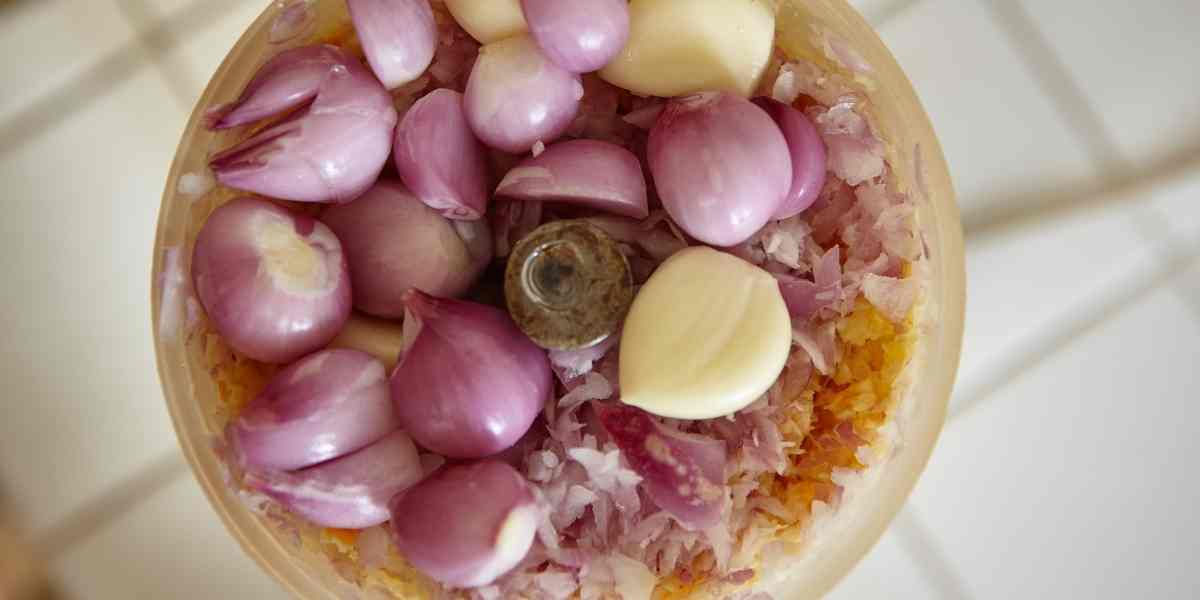If you are a person with an appetite for bread, then the Vitamix blender is your best friend.
The Vitamix blender offers multiple functions that can be used to make delicious doughs and batters. For example, Vitamix can be used as a food processor or mixer to knead the dough into shape.
It has been known for some time that using a stand mixer or food processor can result in over-kneading and therefore undesirable gluten development, thereby creating tough bread rather than lighter, fluffier loaves.
However, the blades of the Vitamix blender can produce light and fluffy loaves while avoiding this problem.
The following section will look at how you can make your own bread dough in a Vitamix blender (and yes, it really works!).

Can You Make Bread Dough In A Vitamix?
Yes, you can make bread dough in a Vitamix blender.
This is possible because the blades are designed to break up even tougher things like grains and beans. And who doesn’t love hot fresh-baked bread!
Related Post: Can You Make Cookie Dough In A Ninja Blender?
What Dough Can I Make In A Vitamix Blender?
The best doughs to make in a Vitamix blender are ones that involve yeast such as traditional white bread (this will get you closest to ‘normal’ appearances of loaves) and challah (which is popular for braiding).
However, it’s not advisable to use this machine for cookies or cakes; they generally rely more on chemical leavening rather than yeast fermentation and may not rise sufficiently when using a blender.
How To Make Bread Dough In A Vitamix Blender?
The following ‘basic’ recipe for bread dough will yield one small loaf; you can double it up if you wish.
Ingredients
- 1 cup warm water (105-115°F)
- 2 1/4 tsp table salt
- 3 1/2 cups bread flour (can use all-purpose flour instead)
- 1 tbsp honey (or 2 tsp sugar, or another sweetener of your preference; alternatively omit this altogether and add another tablespoon of water to the mix instead)
- 3/4 tsp active dry yeast powder
Procedure
- Place the flour into the Vitamix container. Secure lid and select Variable 1.
- Turn the machine on and off quickly in short bursts to start mixing ingredients. Once the mixture starts to come together, stop the machine.
- Detach the lid and scrape down the sides of the container with a rubber spatula if necessary.
- Replace cover.
- Select Variable 1.
- Start the machine on its lowest speed to gradually increase speed until dough forms a ball around the blades (similar to kneading by hand).
- The dough should be very elastic in consistency, smooth, not sticky or too dry, but soft enough that it can easily be shaped into a ball that doesn’t collapse when poked with two fingers gently pressed together.
- If this does occur, add an extra tablespoon of water to the dough mixture while processing next time though; if there are lumps after processing, discard and start again.
- Fold the dough over onto itself several times to make a ball; this helps develop the gluten in the dough.
- Lightly grease an airtight container with nonstick spray or olive oil (this will prevent the dough from drying out). Place ball of dough inside and cover with lid or plastic wrap.
Can I Make Bread Dough By Hand Instead?
Yes, you can.
But it’s not recommended for beginners or anybody who is busy. It really does save time to have a machine do the kneading for you, and more so if this machine can multitask!
Do I Need To Add More Flour Than Normal For The Recipe?
No, the dough should be the same consistency as normal bread dough that has been prepared by hand or with another kind of mixer.
Which Vitamix Blender Models Can Be Used For This Job?
Any model of Vitamix blender with variable speeds can be used to make bread dough in a Vitamix blender. However, there are benefits to using certain models over others.
For example, the Standard Vitamix Blender is a very affordable model that can produce bread dough in a Vitamix blender. It has a 2 peak horsepower motor and comes with variable speeds to allow you to achieve many different textures within your blend, from chunky to smooth.
There is also the Vitamix 5200 which has high/low settings for even more versatility.
Of course, there are other higher-end models such as the Professional Series 750 or 780 that can make light work of kneading dough when combined with their wider containers (they also come with larger capacities).
The 750 and 780 even give you the option to switch between kneading dough through the tamper or doing it by hand.
Which Container Should Be Used To Make Bread Dough In A Vitamix Blender?
Any container can be used for bread dough in a Vitamix blender; however, there are some recommended containers for this purpose.
For example, the Low Profile 64oz Container is not only suitable for making bread dough because of its low profile, but it comes with measurements on the side too (which can be useful when you’re baking).
Can I Add Other Ingredients To The Bread Dough?
Yes! You can add different ingredients into your blend that will change the flavor and appearance of your loaf.
Some ideas include adding dried fruit pieces into your bread dough (e.g., raisins or sultanas) or herbs (e.g., garlic powder, fennel seeds).
How Long Does It Take To Make Bread Dough In A Vitamix Blender?
It will take around 15 minutes to make bread dough in a blender using the standard time that is recommended for preparing bread dough by hand.
Why Is My Bread Dough Not Rising?
This could be for a number of reasons. The most common is that your yeast might not be fresh enough; it needs to be within its expiration date and should not have been refrigerated (or frozen).
You can also check to ensure there was enough salt mixed into the bread dough by checking the amount on the recipe you’re following. Additionally, try letting bread dough rise in a warmer area than usual (e.g., inside near an oven or heating element).
How Long Does Vitamix Bread Dough Last In The Fridge?
Vitamix bread dough can last in the fridge for around a week and still retain its freshness and flavor.
What Type Of Yeast Should I Use?
Any yeast that is suitable for baking can be used to make homemade bread dough with a Vitamix blender. This includes active dry yeast or rapid rise yeast depending on your preference, as well as the type of ingredients you have on hand.
How Do I Make Bread Dough In A Vitamix Blender Sweet?
To sweeten the bread dough, add sugar directly to it before kneading it.
Alternatively, the confectioner’s sugar can be applied after it has been baked to really bring out the sweetness through a frosting-like texture. You could also consider adding raisins or dried fruit to the bread dough for extra sweetness.
What Should I Do If The Bread Dough Is Too Dry?
If your bread dough comes out too dry, don’t despair! You can fix this by adding liquid (milk or water) into it one tablespoon at a time until you achieve the desired consistency.
Another option is to bake it instead of leaving it in the oven; this will allow for steam to escape which could help make your bread dough moist again.
How Long Can Bread Dough Be Left In A Vitamix Blender On Low Speed?
Bread dough that has been left in a Vitamix blender on low speed for over 10 minutes should be removed as soon as possible so it doesn’t burn. If you leave it on for too long, the dough can become dry and stiff which makes it difficult to remove from the container.
Can I Use Gluten-Free Flour For Bread Dough In A Vitamix Blender?
Yes. Many gluten-free flours work well with this blender and can substitute regular flour when making bread dough in a Vitamix blender so long as your recipe doesn’t call for too much liquid.
Why Is My Bread Baked On The Outside But Still Raw On The Inside?
There are many reasons why your bread could come out raw inside, but it usually comes down to not baking it for long enough. It’s best to check the expiration date of your yeast and ensure that you’re measuring your ingredients carefully to get the perfect bread dough baking time.
What If Vitamix Bread Dough Cracks On Top?
If your bread dough cracks on top while it’s being baked, it could be due to not letting it rise enough or overcooking it.
Make sure to let your bread dough sit for around 10 minutes before placing it in the oven so that the air inside can escape, and check how long you have left before taking it out of the oven to ensure that it’s done perfectly.
Is There A Way To Make Vitamix Bread Dough Not Soggy?
If your bread dough turns out too soggy when baked, try slicing it before you bake it.
Also, consider using more flour for dusting and when kneading the bread dough in order to add more structure to it.
You can also add ingredients such as cornmeal or sugar to the top of the bread dough prior to baking in order to cut down on how much moisture is released during cooking.
Is There Anything Else I Should Know When Making Bread Dough In A Vitamix Blender?
Yes, there are some general guidelines to follow when you want to make bread dough in a blender.
For example, it might be necessary to pulse your ingredients at first before switching the blend setting on. This is because many recipes call for kneading the yeast by hand so it doesn’t get activated too early (which can cause a foul smell).
As well as this, not all blenders work with the same speed due to their varied horsepower ratings, so you may need to blend at a slower or faster pace until you find what works best for your machine.
Conclusion
So now you know how to make bread dough with a Vitamix blender!
Of course, if you’re ever unsure about what settings to use on your Vitamix blender, always refer back to the owner’s manual that comes with it.
But (by following the above steps) you will soon be on your way to making your own freshly baked bread every day. Bon appetite!



